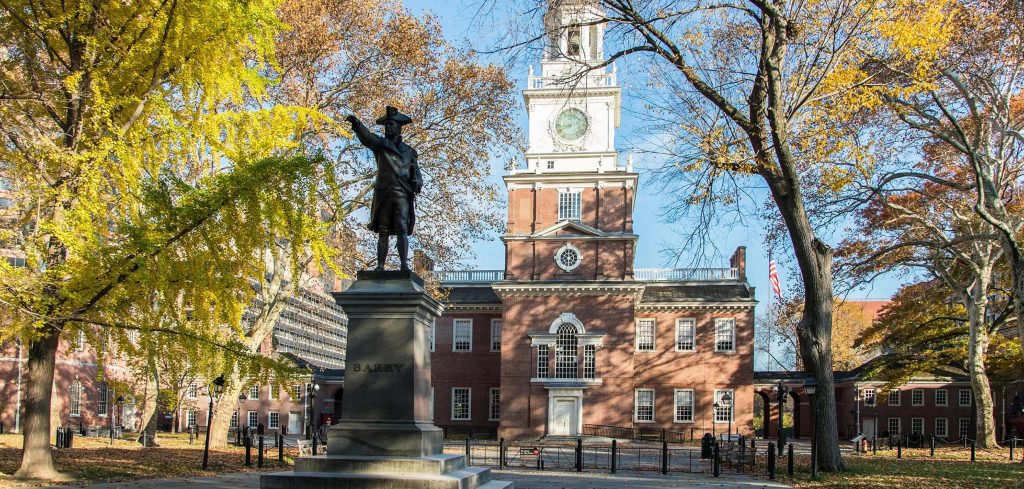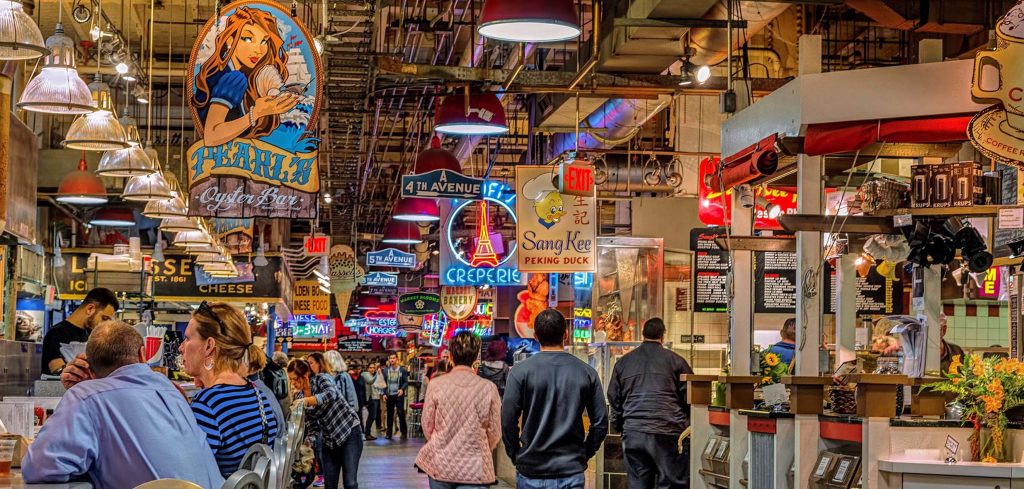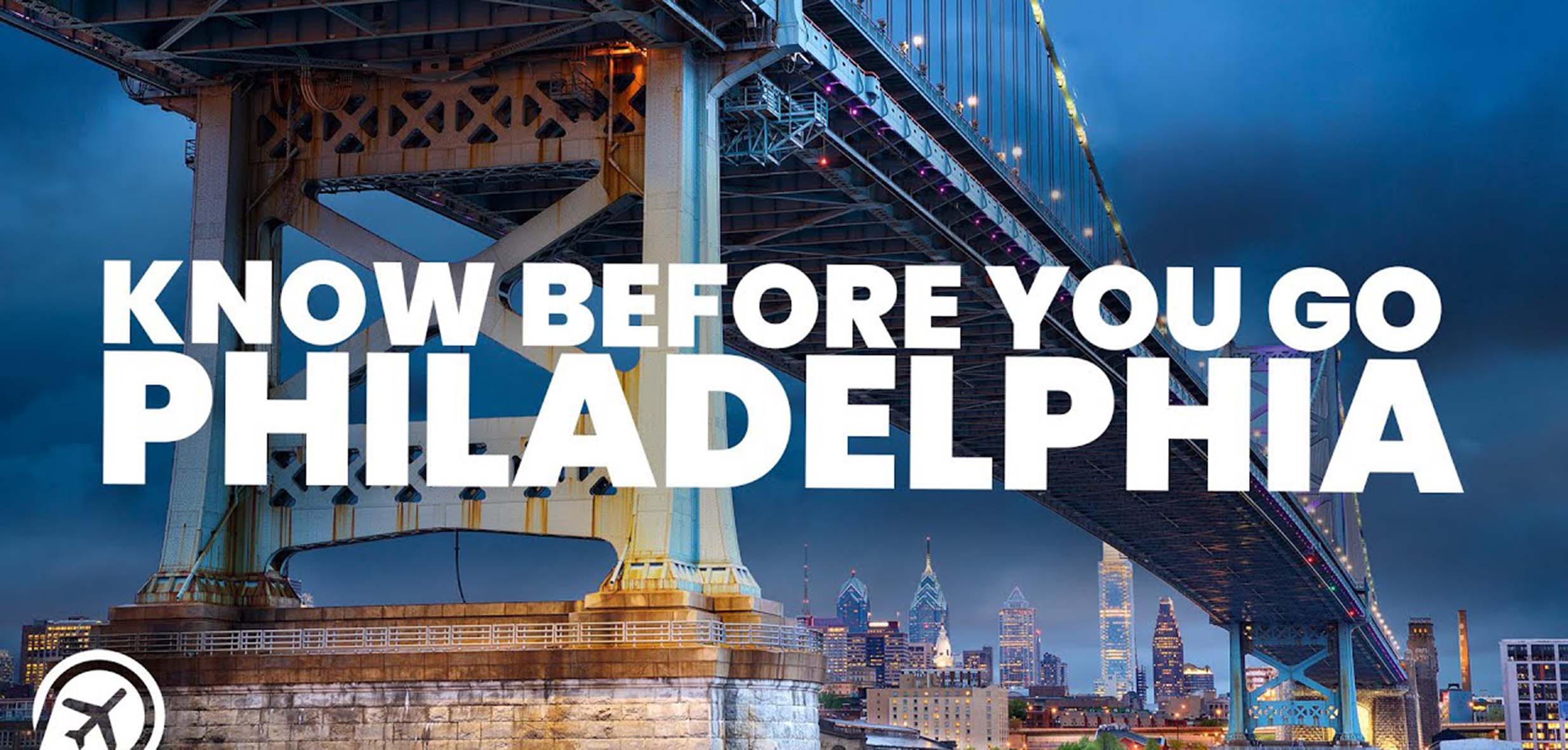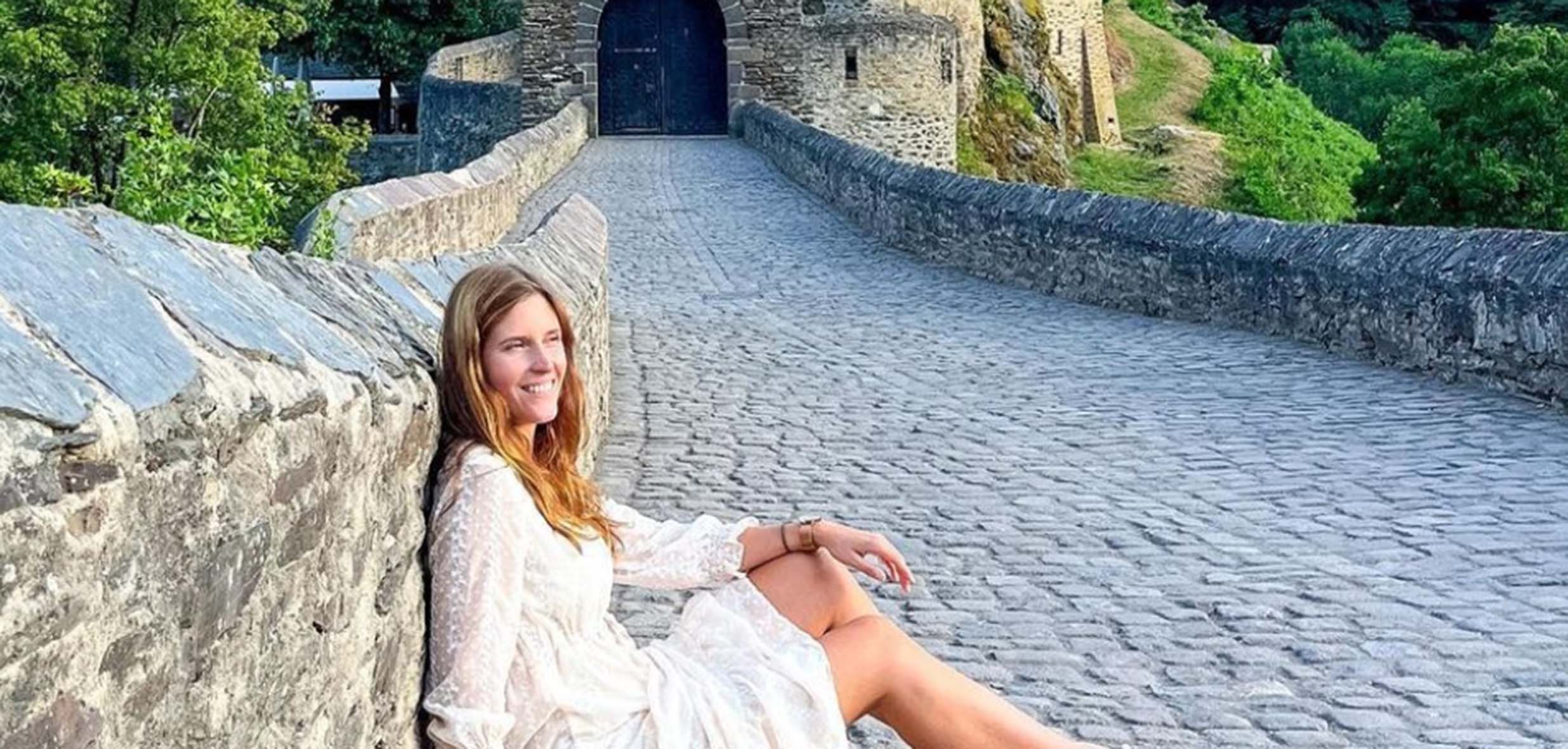Philadelphia, affectionately known as the City of Brotherly Love, is a destination brimming with history, culture, and culinary delights. As a seasoned traveler, I was drawn to Philadelphia not only for its iconic landmarks but also for its vibrant neighborhoods, diverse food scene, and the palpable sense of history that permeates every corner. This trip was more than just sightseeing; it was about immersing myself in the city’s essence and connecting with its people. In this blog, I’ll share my comprehensive experience of exploring Philadelphia, including the essential travel preparations, cultural etiquette, and my adventures through some of the city’s most beloved sites.
Travel Essentials: What to Pack for Philadelphia
Traveling to Philadelphia requires thoughtful preparation, especially considering the city’s variable weather and the variety of activities it offers. My trip was planned for late spring, which is generally mild, but it’s always wise to prepare for unexpected weather changes.
Clothing
Philadelphia’s weather can be unpredictable, so layering is key. I packed light sweaters, a waterproof jacket, and comfortable walking shoes. The city is very walkable, and you’ll likely find yourself wandering through its historic streets, so good footwear is essential. For evenings out, particularly if you plan to dine at some of the city’s more upscale restaurants, a smart casual outfit works well.
Accessories
A sturdy backpack was indispensable, especially for carrying essentials like a camera, water bottle, and maps. I also packed a power bank, which came in handy since I was frequently using my phone for navigation and photography. Sunglasses and sunscreen are a must, especially if you plan to explore outdoor attractions like the Philadelphia Museum of Art or Fairmount Park.
Documents and Currency
While Philadelphia is a modern city with widespread credit card acceptance, it’s always good to have some cash on hand for smaller establishments, street vendors, or tips. I exchanged a small amount of currency before departing and withdrew more from ATMs in the city as needed. The exchange rates were fair, and ATMs are widely available throughout Philadelphia.
SIM Card
If you’re an international traveler like me, getting a local SIM card is a smart move to avoid hefty roaming charges. Upon arrival at Philadelphia International Airport, I visited a kiosk that offered prepaid SIM cards with various data packages. The process was straightforward; I chose a plan that included unlimited data and local calls, which proved invaluable for navigation and staying connected throughout my trip.
Understanding Philadelphia’s Etiquette: A Cultural Insight
Philadelphia is a city that prides itself on its history and tradition, and as such, there are a few cultural nuances and etiquette rules that are worth noting. My interactions with locals were overwhelmingly positive, but there were a few moments where a better understanding of the local customs would have been beneficial.
Greeting and Interactions
Philadelphians are generally warm and friendly, but they also value their personal space and privacy. When meeting someone for the first time, a firm handshake and direct eye contact are appropriate. Unlike in some cultures where hugs or kisses on the cheek are common, Philadelphians prefer to keep it professional, at least until a closer relationship is established.
In casual conversations, topics like sports (especially the Philadelphia Eagles), local food, and city pride are popular. However, it’s advisable to steer clear of topics like politics or personal finances unless you’re with close friends.
Tipping
Tipping is a significant part of the service industry in Philadelphia. It’s customary to tip 15-20% in restaurants and bars, and $1-$2 per drink if you’re at a bar. For taxi drivers, 10-15% of the fare is standard. Hotel staff, such as bellhops and housekeeping, also expect tips; $2-$5 per service is appreciated. I initially found the tipping culture a bit overwhelming, but it quickly became second nature as I realized how integral it is to the local economy.
Public Transportation Etiquette
Philadelphia’s public transportation system, primarily run by SEPTA (Southeastern Pennsylvania Transportation Authority), is widely used by locals and tourists alike. When using the bus or train, it’s important to let passengers exit before you board. Offering your seat to elderly passengers, pregnant women, or those with disabilities is also customary. On the subway, it’s polite to keep conversations quiet and avoid taking up more space than necessary, especially during rush hours.
Dining Etiquette
Dining in Philadelphia can range from casual food trucks to upscale restaurants. In more formal settings, it’s polite to wait until everyone’s food has arrived before starting your meal. If you’re dining with locals, they may encourage you to try Philly’s iconic dishes like the cheesesteak or soft pretzels. One interesting experience I had was at a traditional Italian restaurant in South Philly, where the staff took pride in explaining the origins of each dish. It was a reminder of the city’s rich immigrant history and the role it plays in the local food culture.
During my stay, I experienced a situation that underscored the importance of understanding local etiquette. I was at a small family-owned deli in the Italian Market, ordering a hoagie. The line was long, and I was unfamiliar with the ordering process, which was more fast-paced than I expected. When it was my turn, I hesitated, trying to decide on the toppings, and the person behind the counter gently but firmly encouraged me to make my choice quickly. It was a learning moment – in busy local spots, efficiency is appreciated, and knowing what you want ahead of time is key. The interaction was a small but valuable lesson in adapting to local customs and respecting the pace of life in a bustling city
Philadelphia’s Top Attractions: A Tour of History and Culture
Philadelphia is a treasure trove of historic sites, world-class museums, and vibrant neighborhoods. Here are four must-visit attractions that left a lasting impression on me:
1. Independence National Historical Park
No trip to Philadelphia would be complete without visiting Independence National Historical Park, often referred to as “America’s most historic square mile.” This park is home to several iconic landmarks, including Independence Hall, where the Declaration of Independence and the U.S. Constitution were debated and adopted, and the Liberty Bell, a symbol of American independence.

How to Get There
The park is located in the Old City district, and it’s easily accessible by public transportation. I took the Market-Frankford Line to 5th Street Station, which drops you off just a short walk from the entrance to the park. If you’re driving, there are parking garages nearby, though I found the public transit option more convenient.
What to Do
I started my visit at the Independence Visitor Center, where I picked up a map and learned about the various tours available. The guided tour of Independence Hall was a highlight; standing in the room where the Founding Fathers debated the future of the nation was a powerful experience. I also spent time at the Liberty Bell Center, where exhibits detail the bell’s history and its significance as a symbol of freedom.
Another fascinating stop was the Benjamin Franklin Museum, located in Franklin Court. This interactive museum offers insights into Franklin’s life as a statesman, inventor, and diplomat, and it’s especially engaging for visitors of all ages.
Tips and Etiquette
Given the significance of these sites, it’s important to maintain a respectful demeanor. Photography is allowed, but I made sure to turn off my flash in sensitive areas, like inside Independence Hall. Also, since the park is a popular tourist destination, it’s best to arrive early in the day to avoid long lines, especially during peak seasons.
2. Philadelphia Museum of Art
The Philadelphia Museum of Art is one of the largest and most renowned art museums in the country. The museum’s impressive collection spans thousands of years and includes works by masters such as Van Gogh, Picasso, and Duchamp. Of course, the museum is also famous for the “Rocky Steps,” the 72 stone steps leading up to the entrance, immortalized in the film Rocky.
How to Get There
The museum is located on the Benjamin Franklin Parkway, a cultural boulevard that also houses several other museums. I opted to take a leisurely walk from Center City, which took about 20 minutes. Alternatively, the museum is accessible by bus or a short taxi ride.
What to Do
My visit began with a photo opportunity at the Rocky Steps, where I joined a few other tourists in re-enacting the famous scene from Rocky. Inside the museum, I spent hours wandering through the various galleries, each offering a unique glimpse into different periods and styles of art.
The European collection, featuring works by the Impressionists and Post-Impressionists, was particularly captivating. I also enjoyed the modern and contemporary art sections, where Duchamp’s enigmatic Étant donnés was a standout piece. The museum offers free guided tours throughout the day, which provide deeper insights into the collections.
Tips and Etiquette
The museum can be overwhelming due to its size, so I recommend planning your visit around specific galleries of interest. The staff is incredibly knowledgeable and helpful, so don’t hesitate to ask for directions or information. Also, while the museum allows photography, flash and tripods are prohibited, so be mindful of the rules.
3. Reading Terminal Market
Reading Terminal Market is a foodie’s paradise and one of America’s oldest public markets. This bustling indoor market offers a wide array of local and international foods, from Pennsylvania Dutch specialties to freshly made sandwiches and pastries.

How to Get There
The market is centrally located in downtown Philadelphia, near the Convention Center. It’s easily accessible by foot from many of the city’s main attractions, or you can take the subway to Jefferson Station, which is just a block away.
What to Do
I spent a delightful morning at Reading Terminal Market, sampling various offerings from the diverse vendors. I tried the famous Philly cheesesteak from Carmen’s, which lived up to its reputation, and indulged in a freshly baked whoopie pie from Beiler’s Bakery. The market also features vendors selling cheeses, meats, and fresh produce, so it’s worth spending some time exploring.
Tips and Etiquette
The market can get quite crowded, especially during lunchtime, so it’s a good idea to visit early or during off-peak hours. While the market is generally clean, it’s advisable to wash your hands before eating and to keep an eye on your belongings in the bustling environment. Also, many vendors accept cash only, so having some on hand is useful.
4. Fairmount Park
Fairmount Park is one of the largest urban parks in the country, offering a vast expanse of green space and a variety of recreational activities. The park is home to several attractions, including the Philadelphia Zoo, the Schuylkill River Trail, and the beautiful Boathouse R
How to Get There
Fairmount Park is located along the Schuylkill River and is easily accessible by bus, bike, or car. I took a bike ride along the Schuylkill River Trail, which provided stunning views of the city’s skyline and the park’s natural beauty. Alternatively, the park’s various entrances are well-served by public transit.
What to Do
The park offers a range of activities, from hiking and biking to picnicking and rowing. I visited the Philadelphia Zoo, which is home to a wide array of animals and offers interactive exhibits for visitors of all ages. Boathouse Row, with its historic boathouses and scenic river views, is perfect for a leisurely stroll.
Tips and Etiquette
Fairmount Park is a popular spot for both locals and tourists, so be prepared for crowds, especially on weekends. When visiting the zoo or other attractions, respect the animals and follow the posted guidelines. For outdoor activities, bring sunscreen, a hat, and plenty of water, as the park can get quite sunny and warm.
Street Food and Safety: A Taste of Philadelphia
Philadelphia is renowned for its street food, with an array of options that cater to every palate. Here are a few popular street foods you must try, along with some safety tips.
Popular Street Foods
- Philly Cheesesteak: This iconic sandwich, made with thinly sliced beef, melted cheese, and often sautéed onions, is a must-try. Pat’s King of Steaks and Geno’s Steaks are two of the most famous spots to grab a cheesesteak.
- Soft Pretzels: Philly-style pretzels are a delicious and salty snack that’s widely available from street vendors throughout the city. They’re best enjoyed fresh and warm.
- Roast Pork Sandwich: Another local favorite, the roast pork sandwich is typically served with provolone cheese and broccoli rabe. DiNic’s in the Reading Terminal Market is known for its excellent version of this sandwich.

Street Food Safety Tips
When sampling street food, it’s important to ensure that the vendors maintain good hygiene practices. Here are a few tips:
- Check Cleanliness: Observe the vendor’s food preparation area. The presence of clean utensils and the use of gloves are good indicators of hygiene.
- Freshness: Opt for food that is freshly cooked or prepared. Avoid items that have been sitting out for an extended period.
- Water and Sanitation: Carry hand sanitizer and use it before eating. Drink bottled water if you’re unsure about the safety of local tap water.
Planning Your Itinerary and Budget
Philadelphia offers a wealth of experiences, so planning your itinerary carefully is crucial to making the most of your trip. Here’s how I approached it:
Itinerary Planning
I started by identifying the key attractions I wanted to visit and then mapped out a logical route to maximize my time. I allocated specific days for different neighborhoods and landmarks, allowing flexibility for spontaneous discoveries. For example, I dedicated one day to exploring the historic sites around Independence National Historical Park and another day to the cultural institutions like the Philadelphia Museum of Art and the Franklin Institute.
Budget Adjustments
Philadelphia is a relatively affordable city compared to other major U.S. cities, but costs can add up. I budgeted for accommodation, meals, transportation, and entrance fees to attractions. I used a mix of public transportation and occasional taxi rides to manage costs effectively. For dining, I balanced between high-end restaurants and local street food, ensuring a diverse and enjoyable culinary experience.
Travel Insurance
I always recommend travel insurance to cover unforeseen events such as medical emergencies, trip cancellations, or lost luggage. For this trip, I opted for a comprehensive policy that included coverage for medical emergencies, trip interruption, and baggage loss. It provided peace of mind and allowed me to focus on enjoying my time in Philadelphia.
Philadelphia is a city that seamlessly blends history with modernity, offering something for every traveler. From its historic landmarks and world-class museums to its vibrant food scene and welcoming locals, Philadelphia exceeded my expectations. By preparing appropriately, understanding local etiquette, and planning my itinerary carefully, I was able to make the most of my visit and create lasting memories. Whether you’re a history buff, a food lover, or simply looking to explore a dynamic city, Philadelphia is a destination that truly has it all.



